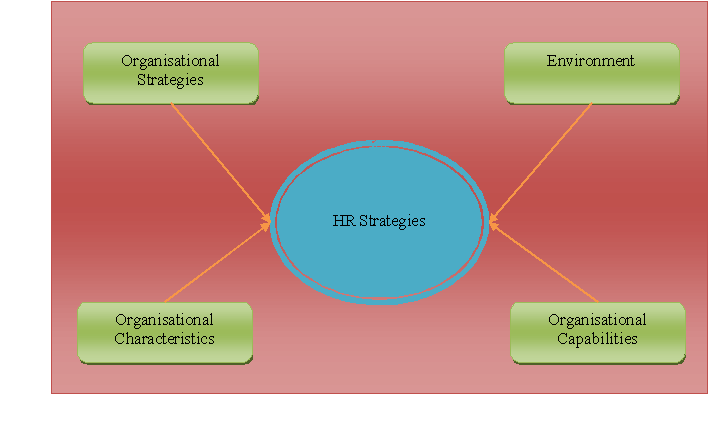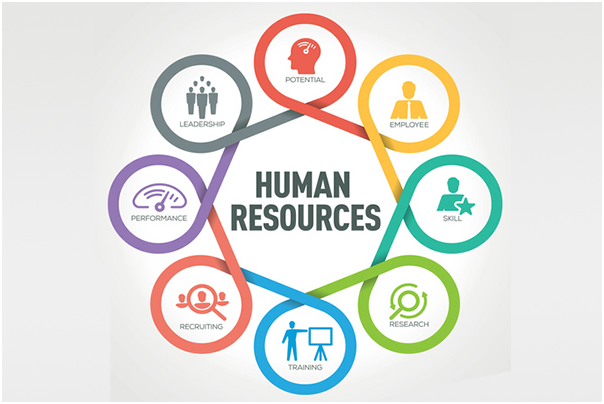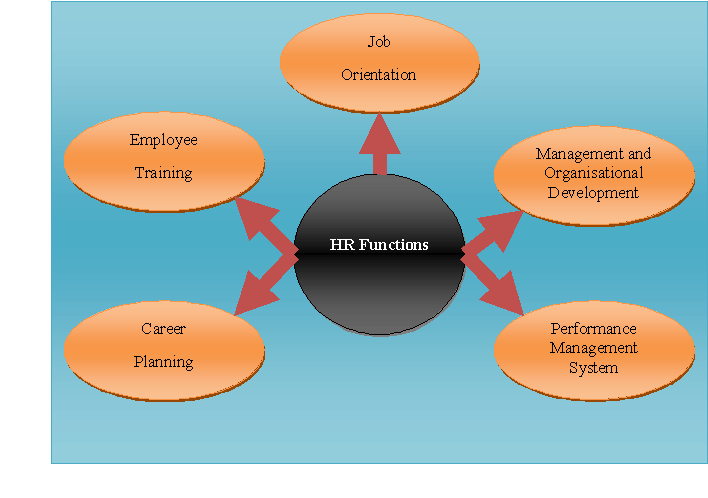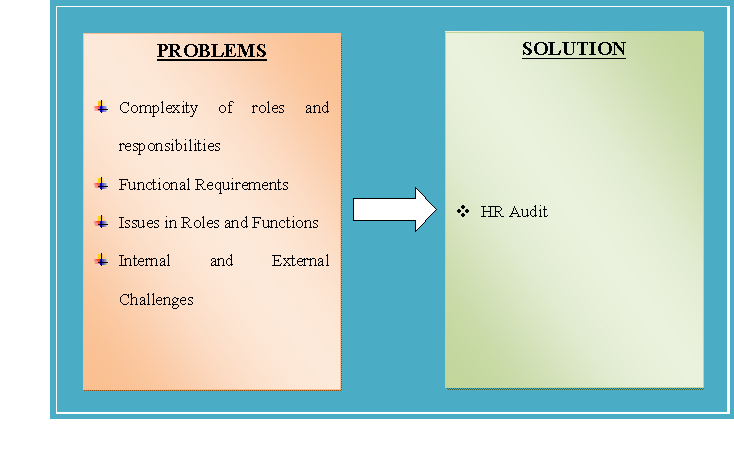HRM Assignment: Importance Of Human Resource Audits Within Organisations
Question
Task: Main task:
Accounting audits are compulsory in many countries and are conducted to assess the financial performance of an organization and ensure that it is fully abiding by legal requirements. For this HRM assignment, imagine that you are in favor of mandatory HR audits to review the adequacy, legality and effectiveness of the processes and practices of an HR department in order to help identify any gaps in HR practices. Students should develop a report which makes the case for having mandatory HR Audits within organizations. Students demonstrate their knowledge of the topic at hand, apply their knowledge to the tasks, and do critical thinking and analysis. The students’ arguments should be based on the ideas, concepts and theories which have been examined in the course as well as their personal research.
Answer
Introduction
HRM or Human Resource Management is the process by which the human resources within an organisation (employees and workers) are managed. The organisations have specific departments including one or more personnel dedicated to performing specific activities regarding the management of human resources(Sujan, Bhasinand Mushtaq2020). There is a general idea that the function of HR is only hiring of employees for the company but in reality, there are multiple important functions and responsibilities of the HR department for an organisation. On the line of work, the HR departments may also encounter several issues and challenges or require significant changes within the functions. The organisations conduct HR audits from time to time in order to review the HR functions and determine whether any changes are necessary.
In this report, the HR functions and other aspects of responsibilities have been discussed and analysed including HR audits and their importance within the organisations.
Human Resource Management, Approaches and Issues
Human Resource Management is referred to the department within an organisation that deals with hiring and managing the human resources working within the organisation. While the basic of functions of the HR department include hiring and performance management of employees, there are different aspects to the functions including managing human resource planning, spotting and recruitment of talents, development and growth of the employees within the organisation, performance tracking of employees, employee communication, workplace health and safety management and others(Gupta, Mittaland Mittal2019). From the various roles and responsibilities listed above, it can easily be deduced that HR department is one of the most important departments within a functional organisation. Additionally, it is also important to align the organisation’s internal and external operations with the HR functions in order to get maximum benefits of the same.
In order to maximize firm performance, several organisational aspects must align with the HR strategies that are listed as follows.
Organisational Strategies – The first main organisational aspect that needs to fit with HR functions is organisational strategy. Again, within organisational strategies, there are multiple aspects that affect the HR department functions. Some of these aspects include corporate strategies, business strategies and business unit strategies along the lines of which, the HR department needs to work(Foiji, Hoqueand Khan2019). If the functions of HR are widely different from these strategic aspects, the firm performance will fall below the expected levels and the purpose of using HR functions will be completely nullified. Environment– The environment of the organisation also affects the HR functions considerable. Some of the major environment related aspects include volatility, degree of uncertainty, magnitude of change and complexity. The HR functions must also adapt with these environmental aspects in order to work as per the expectations and maximise the performance of the organisation.

Figure 1: HR Strategies and Alignment with Organisation
(Source: Created by Author)
Organisational Characteristics – Some of the major characteristics of an organisation that need to fit with the HR functions include production process, market posture, organisational structure, managerial philosophy and organisational culture(Agnihotri, Sareen and Sivakumar2018). The HR officials must be aware of these characteristics of the organisation so as to ensure their functions are properly aligned with the characteristics of the organisation. Organisational Capabilities – The HR professionals need to be a high degree of awareness regarding the organisational capabilities and manage the functions in a way that provides a competitive edge to the organisation. Additionally, the HR department must also drive the firm forward by exploiting its competencies. Once all these factors are aligned with the HR department, the organisational performance is maximised and the expectations and targets are met accordingly.
However, even if the approach towards HR functions is done right, some issues might arise within the department. Some of these issues are discussed below.
Rapid Change – Rapid changes within the organisation may create significant issues within the HR functions if they are not provided with sufficient clarity and information(Chang-Howe2019).
Globalisation – Globalisation of an organisation might create unnecessary issues for the HR department if they have less knowledge and expertise on foreign human resources.
Evolving – Evolving organisations with new technology and expertise requirements can create issues for HR functions that do not evolve along with the organisation.
Skill Shortage – Significant skill shortage creates significant issues for HR functions as the HR professionals are unable to spot and recruit new talents who might be beneficial for the organisation. On the other hand, hiring of unskilled workforce will not only disrupt the operations of the organisation but will also create a negative image of the HR functions.
Organisational Issues – Internal organisational issues may also create unnecessary issues within the HR department.
Individual Issues–Finally, individual issues among the HR professionals within the department can create significant issues within the HR function.
HR Processes and Performance Criteria
There are multiple HR processes that need to be performed by HR professionals as a part of their duties within the organisation. Additionally, the HR functions also need to fulfill specific performance criteria in order to ensure maximum benefits for the organisation. Some of the main HR processes and performance criteria for the same are listed as follows.
Job Analysis – One of the most important functions of the HR department is job analysis. The organisations have several job roles and vacancies and the HR departments need to feel these vacancies through recruitment(Chaturvedi 2020). For this purpose, an in-depth analysis of the job requirements is needed and then the HR can proceed with the hiring process. In this case, the main performance criterion is clear understanding of the job requirements so that the most appropriate candidates can be considered for hiring.
Job Design – Another major function of HR is to design the work or job requirements in a clear and concise way so that interested candidates can easily understand the job roles and responsibilities. Once the HR executive has clear understanding of the job, he / she can then proceed to design the job requirements document listing the roles, duties and responsibilities for the specific posts in which, candidates will be considered. The main performance criterion is a concise documented job design easily understandable by potential candidates.

Figure 2: HR Processes and Responsibilities
(Source: Foiji, Hoqueand Khan2019, pp.5)
Talent Management – Talent Management is one of the most important roles for the HR as it has a lot of impact on company’s long term future and benefits. Talent management process not only includes spotting, screening and hiring of talents but also managing the existing talented employees within the organisation so that these talents do not leave the organisation with a high attrition rate(Bieliaieva2019). The main performance criteria for the HR in this case include reduction of attrition rate of the employees within the organisation, increased hiring of talented employees for the organisation, development of newly hired talents and others.
Human Resource Planning – While one of the main jobs of the HR department is to hire personnel for filling vacant jobs within the organisation, simply hiring without proper planning is not an acceptable work from the department. For example, just because the company needs to fill a particular post with 50 people does not mean the HR can go ahead and hire 50 relevant personnel. It requires proper resource planning, understanding of the long-term requirements and values and proper alignment with the company’s functional requirements. The main performance criterion for the HR in this regard is a proper planning for human resource recruitment and management on a long-term basis.
Recruitment and Selection – Once all the plans are completed and interested candidates are registered, the HR personnel needs to conduct the recruitment procedure that includes undertaking written and oral tests, hosting personal interviews, verification of identity and qualification documents, selection from the candidate’s pool and others(Vasantham2021). In this entire process, the HR needs to spot talents and other candidates who suit and qualify for the vacant job roles and then proceed to the recruitment procedure by creating contract documents. The main performance criterion for this function is the hiring of selected candidates who can provide long term value to the organisation.
Aspects of HR Functions
In the above header, the detailed functions and responsibilities of HR department have been analysed along with their respective performance criteria. In addition to those performance requirements and criteria, there are some other aspects of HR functions as well that benefit the internal operations of the company. Some of these aspects are discussed below.
Job Orientation – Once new employees are hired for the job; they require job orientation sessions in order to understand job roles and adapt with the organisational environment. The HR department needs to organise these orientation sessions and ensure all the new joiners are properly oriented before they are allocated to their respective teams(Pohludka, Stverkovaand Panna2018). For this purpose, the HR personnel need to have strong knowledge of the job roles and specifications that have already been discussed above.
Employee Training – The HR department also needs to organise employee training sessions, especially for the fresher employees hired directly after graduation programs. These employees have no professional experience and hence, they need training after recruitment before they are assigned to actual work within the teams. The HR department can assign specific work based skilled personnel from within the organisation to train the new joiners. The HR also needs to keep track of the training progress and take final decisions on team allocation or termination from employment.
Management and Organisational Development – In addition to hiring and training employees, the HR department also plays an important role in the management and organisational development aspects. The HR department is the main supporting pillar of any organisation as it helps the company steer towards the right direction in terms of growth and sustainability(Umanailo2021). The HR also plays important roles in internal process improvements and changes that have positive impact on the growth of the organisation.
Career Planning – HR professionals also help the employees in their career planning with organisation. Once employed, there are often cases when the employees lack vision and career plan due to certain uncertainties within the organisation. As a result, the employees become demotivated to work and ultimately plan on leaving the organisation(Ulrichand Grochowski2018). The HR department needs to ensure these employees have clear vision and career plan within the organisation by clarifying the job roles, organisational goals and employee benefits with long term value. These factors play a big role in the decision making of the employees to stay and work with the organisation, or leave.

Figure 3: Different HR Functions in an Organisation
(Source: Created by Author)
Performance Management System– Another major HR function aspect is performance management of the employees. While most of the employees’ performances are evaluated and tracked by the respective team leads or managers, the HR also needs to keep track of the employees’ performances(Baharuddinet al. 2021). This allows the organisation to remain informed about the performances of the employees and ensure proper decisions are taken to motivate good performers further or terminate contracts of the employees performing poorly over a long period of time. The HR plays an extremely important role in taking critical decisions regarding retention and termination and hence, the department must keep track of the performances and take active steps to enhance the same among the employees.
Well-being, Issues and Need for HR Audits
The part of duties of HR department includes management of employee well-being and social aspects of work while also attending to issues regarding employee benefits, employee safety & health and employee relations. In order to execute these procedures smoothly with clearly defined roles and acts of execution, HR audits are extremely necessary within an organisation. HR audits are undertaken from time to time in order to review existing HR policies and functions for determining whether any chances in policies and functions are necessary (Pohludka, Stverkovaand Panna2018). If the audit result indicates changes are necessary, appropriate lines of action are undertaken to introduce such changes that will benefit the HR functions. HR audits also provide the organisation with the opportunity to track the performance of the HR department and introduce more changes in case the performance criteria are not met.
While the HR department faces major issues and challenges in fulfilling their roles, responsibilities and functional requirements, the solution is to identify these issues and challenges through HR audits and introduce various changes. The main areas of review that fall under the HR audit process are as follows.
Hiring – This part of the audit is required to determine whether the hiring procedure has been properly conducted by the HR and the hiring criteria of the organisation have been met. The audit covers the history of hiring within the audit period, actual recruitment numbers and attrition rate among the new joiners.
Benefits – This part of audit reviews the benefits received by the HR as a part of their job roles and functions. These benefits may change based on the performance of the HR department and also changing roles and responsibilities of the HR within the organisation.
Compensation–The audit procedure involves review of the compensation packages of the HR personnel (Agnihotri, Sareen and Sivakumar2018). The compensation is further modified based on the performance of the HR personnel and meeting of specific work-related criteria.
Termination– This audit process reviews the handling of termination procedures by the HR professionals. The auditor reviews the termination incidents including termination meetings with the intended employees, dispatching of their pending compensation, publishing of termination mail / document and others.
Performance Evaluation – This audit process involves review of the performance evaluation procedures undertaken by the HR department. This includes determining any bias within performance review, appraisal procedures based on procedure, interaction and communication with the employees and others. Job Description– This audit reviews the updates in job descriptions set up by the HR department based on hiring requirements of the organisation.
File Review– This audit process involves review of the files of the HR personnel from time to time.

Figure 4: Problems and Solution of HR Issues and Challenges
(Source: Created by Author)
While the main objective of the HR audit is to review the HR functions from time to time, it is also needed to ensure the HR is well aware of specific duties including management of employee well-being and solving issues that might occur within the HR functions (Bieliaieva2019). The audits generally create opportunities for the HR to make changes within the functions for better performances that will also benefit the organisation in the long term.
Conclusion
Based on the overall analysis and review, it can be concluded that HR functions play major role in determining the success of an organisation on a long term basis. Although the HR functions are generally part of internal operations of any organisation, they have major impacts on the external operations of the companies as well. As such, they create bridge between the internal and external operations while also streamlining employee performances and management. Despite these, there are several issues often faced by the HR or there are certain conditions in which, the HR department requires significant changes. In order to identify these changes before review and implementation, HR audits are performed where various aspects of HR functions are reviewed on time to time basis. If certain change requirements are identified, they are documented and then sent over to the management for review and implementation. These changes ensure the HR functions keep performing as per the company’s requirements and add value to the long term growth of the organisation.
References
Agnihotri, S., Sareen, P. and Sivakumar, P., 2018. A Comprehensive Model for Competency Mapping: Connecting Organizational Goals with Employee Competencies and Strategy Driven HR Functions. Asian Journal of Management, 9(1), pp.697-701.
Baharuddin, U.F., Boli, R.H., Bin-Tahir, S.Z., Umanailo, M.C.B. and Umanailo, N., 2021.Analysis of HR Competence and Skeptics on Regional Financial Performance through Quality Audit in Mamuju Regency. Bieliaieva, N., 2019. Internatinal practice f the cncepts use “HR audit”,“staff audit”,“persnnel audit”. Economics.Ecology.Socium, 3(3), pp.94-101. Chang-Howe, W., 2019. The challenge of HR integration: a review of the M&A HR integration literature. Journal of Chinese Human Resource Management.
Chaturvedi, N., 2020. Future of HR Functions: Technology Driven Transformation of HRM to Remain Effective and Relevant. A bi-annual Refereed International Journal of Management & IT, p.57. Foiji, M., Hoque, M.A. and Khan, M.B.H., 2019. Strategic potential of e-HRM in outsourcing HR functions. International Journal of Business and Social Research, 9(2), pp.1-10.
Gupta, B., Mittal, S. and Mittal, V., 2019. Employer branding and its relation with HR functions of employee recruitment and retention: A review of literature. The Marketing Review, 19(1-2), pp.85-105. Pohludka, M., Stverkova, H. and Panna, A., 2018. Proper HR audit and due diligence process: key factors in a successful acquisition.HRM assignment In 8th International Multidisciplinary Scientific Symposium (p. 865). Sujan, B., Bhasin, J. and Mushtaq, S., 2020. Reallocation of HR Functions: A Study of HR Effectiveness in Banking Sector. Jindal Journal of Business Research, 9(1), pp.72-83.
Ulrich, D. and Grochowski, J., 2018. Building a world class HR department. Strategic HR Review. Umanailo, M.C.B., 2021. Analysis of HR Competence and Skeptics on Regional Financial Performance through Quality Audit in Mamuju Regency.
Vasantham, S.T., 2021. Importance of HR audit. S. TephillahVasantham, Importance of HR Audit. International Journal of Management, 11(11), p.2020.












